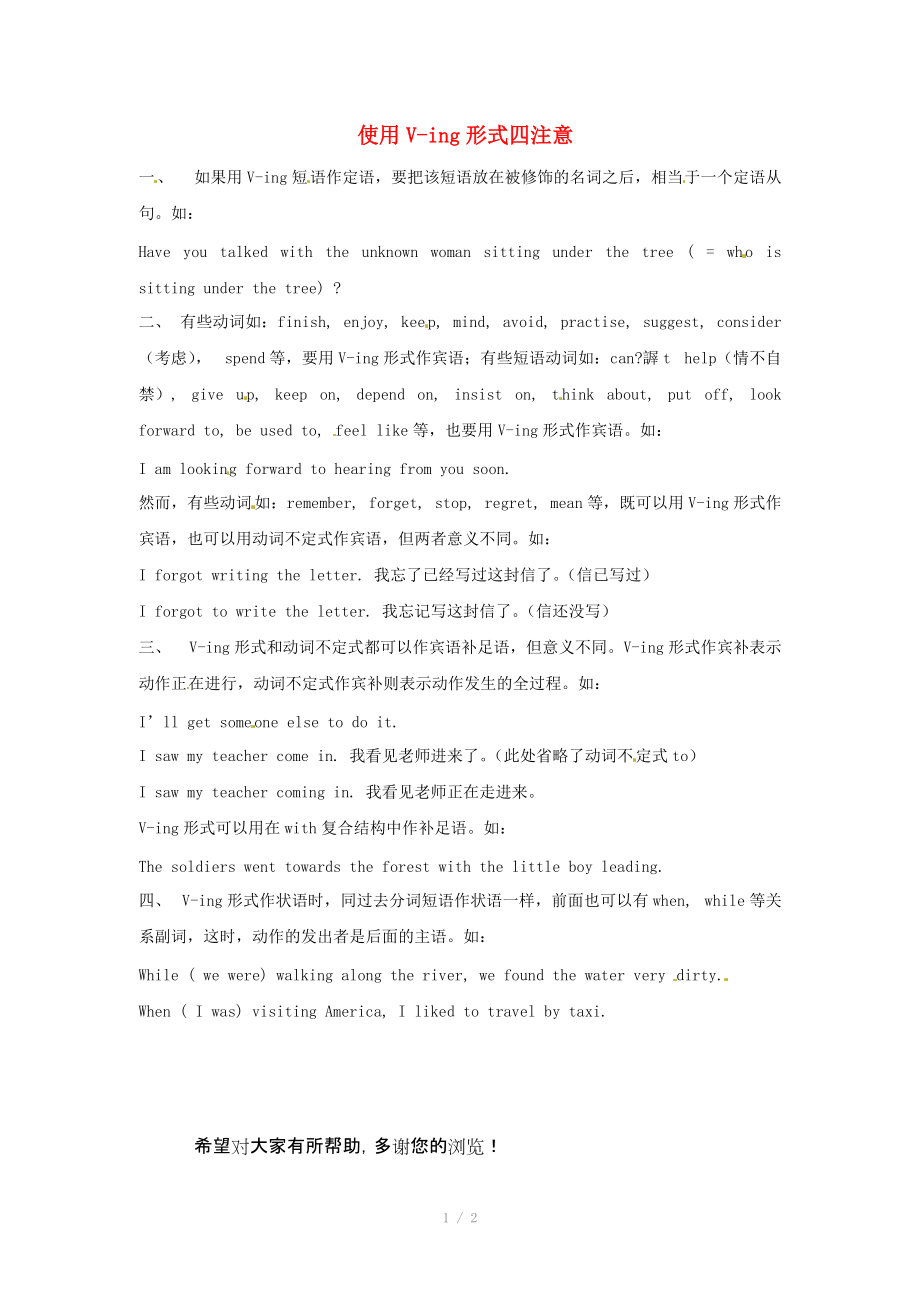《2014年秋高中英語 Module 3 Adventure in Literature and the Cinema 語法透析講解 外研版必修》由會員分享����,可在線閱讀,更多相關《2014年秋高中英語 Module 3 Adventure in Literature and the Cinema 語法透析講解 外研版必修(2頁珍藏版)》請在裝配圖網(wǎng)上搜索���。
1�����、
使用V-ing形式四注意
一��、 如果用V-ing短語作定語���,要把該短語放在被修飾的名詞之后,相當于一個定語從句����。如:
Have you talked with the unknown woman sitting under the tree ( = who is sitting under the tree) ?
二���、 有些動詞如:finish, enjoy, keep, mind, avoid, practise, suggest, consider (考慮), spend等�,要用V-ing形式作賓語;有些短語動詞如:can?謘t help(情不自禁), give up, kee
2�、p on, depend on, insist on, think about, put off, look forward to, be used to, feel like等,也要用V-ing形式作賓語�����。如:
I am looking forward to hearing from you soon.
然而�����,有些動詞如:remember, forget, stop, regret, mean等��,既可以用V-ing形式作賓語���,也可以用動詞不定式作賓語,但兩者意義不同���。如:
I forgot writing the letter. 我忘了已經(jīng)寫過這封信了���。(信已寫過)
I forgot
3�����、 to write the letter. 我忘記寫這封信了���。(信還沒寫)
三、 V-ing形式和動詞不定式都可以作賓語補足語����,但意義不同。V-ing形式作賓補表示動作正在進行�����,動詞不定式作賓補則表示動作發(fā)生的全過程�。如:
I’ll get someone else to do it.
I saw my teacher come in. 我看見老師進來了。(此處省略了動詞不定式to)
I saw my teacher coming in. 我看見老師正在走進來�。
V-ing形式可以用在with復合結構中作補足語。如:
The soldiers went towards the f
4��、orest with the little boy leading.
四���、 V-ing形式作狀語時����,同過去分詞短語作狀語一樣,前面也可以有when, while等關系副詞�����,這時���,動作的發(fā)出者是后面的主語���。如:
While ( we were) walking along the river, we found the water very dirty.
When ( I was) visiting America, I liked to travel by taxi.
希望對大家有所幫助,多謝您的瀏覽���!
2 / 2
 2014年秋高中英語 Module 3 Adventure in Literature and the Cinema 語法透析講解 外研版必修
2014年秋高中英語 Module 3 Adventure in Literature and the Cinema 語法透析講解 外研版必修

